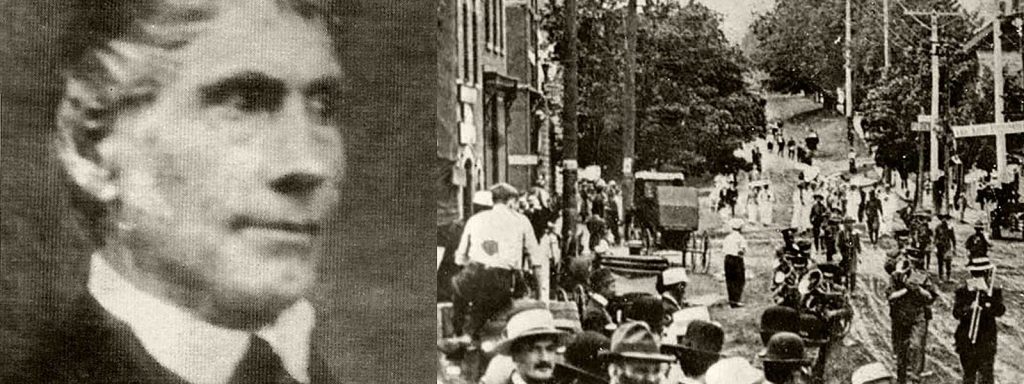On January 1, 2024, the Town of Halton Hills celebrated 50 years. The Town of Halton Hills was formed through the provincially mandated amalgamation of Esquesing Township, Georgetown and Acton in 1974.
Way back, Halton County consisted of nine municipalities: Acton, Burlington, Georgetown, Milton, Oakville, Esquesing, Nassagaweya, Nelson and Trafalgar.
In the 1960s, with the huge population growth in the region, many small towns and rural areas west of GTA started to amalgamate and form municipal governments to better coordinate various responsibilities. For infrastructure, healthcare, school boards, sewage, hydro, policing, fire departments, hospitals, parks and recreation and more.
In 1972 Halton Council established four municipalities – Burlington, Oakville, Milton and North Halton, and in 1974 The Town of Halton Hills was formed.
At the time, not everyone was thrilled with the idea of establishing a regional government. The county representatives attempted to delay the introduction of regional government.
At the first meeting of the Town of Halton Hills, Tom Hill, the first Mayor said:
“…the citizens are saying goodbye to a system with its origin in the medieval England and seeing it replaced by a system with its origins in a Ph.D. thesis”
Looking back, one cannot judge whether those opposing were in the wrong. History mustn’t be viewed through the lens of the present time. The incredible growth that followed, especially over the last 30 years, called for municipal government in each of the four areas.
What’s in the names?
Esquesing
The name Esquesing comes from the Aboriginal people and means “That which lies at the end”.
Georgetown
Georgetown was named after George Kennedy who settled in what is now Georgetown in 1823 and built a saw and grist mill near the intersection of Mill and Guelph streets in Georgetown.
This gave the start to the community.
Acton
Acton was named after a village in Northumberland, England. It was originally known as Danville, after a young clerk who worked at the grocery store that operated in the hamlet in the 1820s. It later changed to Adamsville in recognition of the founding Adams family, only to be changed to Acton as another Adamsville already existed in Canada.
The final name change to Acton was named after the birthplace of Robert Swan, who worked as the village postmaster.
Halton
Halton is the only county in Canada that is not named after a politician, dignitary or royalty from Great Britain. William Halton was a private secretary to Francis Gore, who served two terms as Lieutenant-Governor of Upper Canada.
During his second term (1815-1817), Gore administration had to deal with a large influx of immigrants from the British Isles who settled along the north shore of Lake Ontario near Hamilton.
There was an urgent need for government services and the decision was made to create a new district, named after it’s Lieutenant-Governor – The Gore District.
The Gore District consisted of two parts: one was Halton, after Gore’s private secretary, and the other was Wentworth for a former Lieutenant-Governor of Nora Scotia, Sir John Wentworth.
The Gore District disappeared in 1849 and Wentworth got absorbed by Hamilton. Halton Region that remains to this day.

Important historical milestones:
- The area, known as Halton Hills, was occupied by the Attawandarons, Anishinaabe and Haudenosaunee.
- The early settlers arrived in the 18th century, when the British government negotiated the purchase of Mississauga land under Treaty 19, in 1819.
- Around 1820, George Kennedy built a saw and grist mill at the intersection of what is now Mill and Guelph streets.
- In 1820 Norval’s history began when James McNab bought land to build a mill and raise sheep.
- 1825 marks the beginning of Acton, originally called Danville. This is when the Agams brothers – Ezra, Zenas and Rufus settled in the area.
- In 1852, the Williamsburg area changed its name and became Glen Williams.
- 1856. The Grand Trunk Railway arrived and the area began to develop rapidly.
- In 1864, Georgetown became a village and by 1869 had a population of 1,500.
- In 1926 – 1936 Lucy Maud Montgomery, author of Anne of Green Gables lived in Norval. A major project to rebuild the Norval Manse into a museum and literary center is currently underway.
More about the history: https://esquesinghistoricalsociety.com/
Title photo: The Halton Hills Mayor Tom Hill being sworn in at the inaugural council meeting by Clerk D Pritchard.
